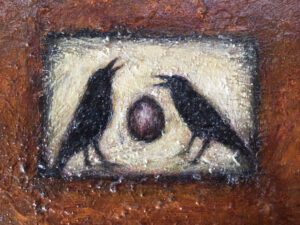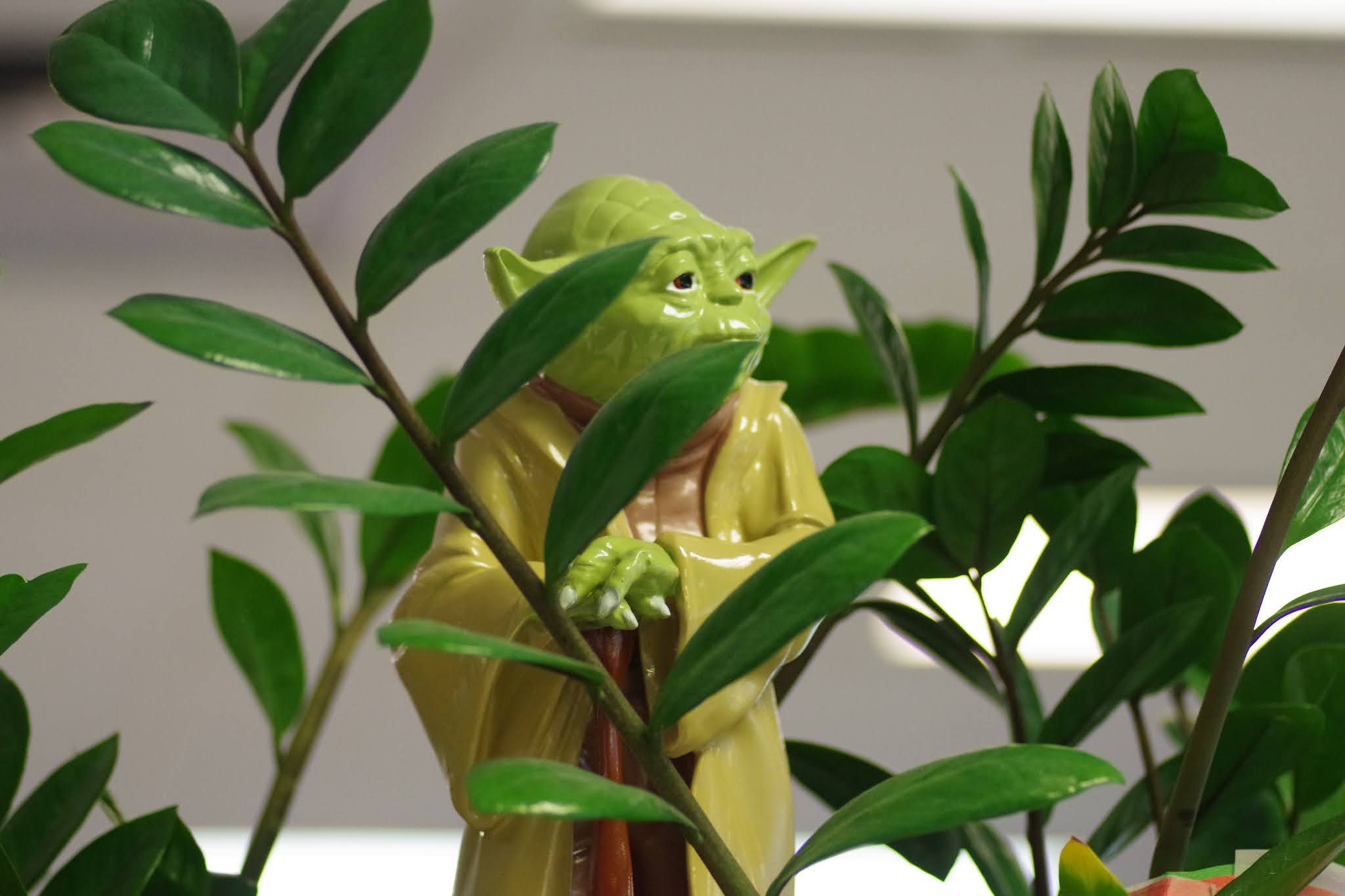This morning, I looked briefly at Next Door, the app that allows neighbors to communicate. It’s a good source of information about what’s happening in my part of Santa Fe: “Is the internet down at your house?”. . . “Someone smashed car windows on my street last night.” . . .”Can anyone recommend a good gardener?” It’s sometimes useful (“Yes, the internet is down all over town, someone took out a power pole with fiber optics”), sometimes not, at least to me (“Bible Study Tuesday at 7 p.m.!”)
This morning I read a post by a man who was upset by flies. Which were mainly outside of his house. He was looking for referrals for an exterminator. Another man asked, “It is legal to feed crows?” Apparently, his neighbor is feeding the birds, and a lot of “crows” (more likely ravens in our neighborhood) were making a mess.
In the past few years, I’ve also read complaints about bobcats (clearly out to kill your cats!), a mountain lion that roamed our area for a short time (and was going to eat your Chihuahua!), a pack of coyotes (probably rabid!) and many, many more—often ludicrous—grievances about wildlife. The recent best was a woman who was upset about a “giant centipede” in her house. What should she do? she asked her Next Door neighbors.

My own relationship to area wildlife is quite different.
A conspiracy of ravens (yep, that’s what you call a group of ravens) frequents the Siberian elm that overshadows my back courtyard. Often they hold a coffee klatch, making a huge ruckus. It can be annoying. But I love ravens. I came to understand and appreciate ravens—and nature in general—more deeply after reading Bernd Heinrich’s The Mind of the Raven (HarperCollins, 1999) and Ravens in Winter (Simon & Schuster, 2014), fascinating books that explain just how smart, communal and collaborative ravens are.
One of my biggest takeaways from these books is that ravens can ideate, that is, they can form an idea, imagine. One of the books (I can’t remember which) details experiments done in which ravens could obtain bait food only by thinking up a step-by-step process and executing it. Which they did quite handily. Thereafter, I could never think about ravens the way I had in the past; now I wasn’t merely appreciative, but really in awe of the shiny black birds. A few years after I read The Mind of the Raven, when my then-partner and I were looking for a new house, we knew we’d found it in the quirky domicile we found located on Laughing Raven Road.
Shortly after moving into my current house, some odd incidents started happening. First, I found a half-eaten apple in my backyard. My backyard is not near the street, a walkway or anywhere people normally travel. Hmm, I thought. Someone’s walked by and thrown their apple into my yard. Weird. Then came a mostly bare chicken leg. Later, a wad of McDonald’s French fries. Finally, as I was picking up one of these “treats,” I heard the ravens overheard and the lightbulb went on. Dining on scavenged food in the tree above, the ravens were disposing of their leftovers in my yard. Case closed. Instead of being irritated, I considered the idea that the ravens were leaving me “gifts”; after all, I keep a birdbath filled with water for them.
I’m astonished and saddened by my neighbors’ fears regarding insects and wildlife. We live in a rural-urban interface. One of the appeals of my subdivision is the nine miles of hiking trails and arroyos (natural waterways) that run through it. Of course we have wildlife. My first winter here, I was walking on one of the paths and came upon a pack of coyotes. They stopped, looked at me (“New in town?”) and sauntered off, disappearing as only coyotes can into the junipers. Ever afterward, I watched for them, occasionally sighting one standing still as a statue in the trees. Never did I feel threatened (“Hey, look guys, there’s dinner! Get her!”). Seeing a coyote—the iconic trickster of Native American lore—instead always seems to me to represent a visitation from the Great Mystery, a reminder that when in Nature, we never even see much of what is right under our noses.

It is true that our interactions with wildlife are not always happy. Bobcats, mountain lions and coyotes can prey on small domestic animals, and in the case of mountain lions, big domestic animals and even people. My former partner and I lost two cats when we lived on the prairie south of Santa Fe, although I suspect they were snatched by the Swainson’s hawks that were prolific in that area, hunting from the comfort of a fencepost. A coyote once tried to take one of our small dogs when we lived in a rural area, but the other dog alerted my partner, who chased it off. And a rattlesnake bit that same little dog (who survived). But most of the wildlife we see around here don’t really want to meet up with us; they’re just trying to get by, find some food, a safe den in which to have their pups, a great tree with a good lookout and the perfect crotch for a nest.
A large, beautiful nest of big sticks sits in just such a crotch high in the tree behind my house and is occupied by ravens year-round. I feel their presence as a blessing, a reminder that I am an animal, too, that we share this odd eco-system near the edge of town. I love to hear the various vocalizations they make, especially the “knocking” sound. I know they are watching me when I go into the back yard to clean up the dog’s poop. And yes, I talk to them. They’re really good listeners.
In The Spell of the Sensuous (Vintage, 1966), David Abram writes about plants and wildlife,
To humankind, these Others are purveyors of secrets, carriers of intelligence that we ourselves often need: it is these Others who can inform us of unseasonable changes in the weather, or warn us of imminent eruptions and earthquakes, who show us, when foraging, where we may find the ripest berries or the best route to follow back home. By watching them build their nests and shelters, we glean clues regarding how to strengthen our own dwellings, and their deaths teach us of our own. We receive from them countless gifts of food, fuel, shelter, and clothing. Yet they still remain Other to us, inhabiting their own cultures and displaying their own rituals, never wholly fathomable. (p. 14)

And thank God for that. If Nature didn’t withhold some of Her secrets from us, would we even care about Her? It is the mysteries of the wild world that compel us to pay attention, maybe even do a little research. Yes, I was afraid of getting stung by one of the scorpions that lived in a forest cabin in which I once resided; I respectfully shook out the bed linens before going to sleep each night. I also read about them, learning that scorpions have been on the planet for at least 435 million years, compared to humans’ paltry 300,000-year history. I found out that when scorpions mate, they grasp each other’s pincers and dance. How can you not love that? Best of all, most people who get stung by a scorpion don’t even need medical treatment (only a few species are highly dangerous). Scorpions are eaten by some African and Asian peoples and scorpion venom may soon be used to create drug treatments for human use. Scorpions are also kept as pets and appear in mythology, art, poetry and yoga. Fascinating.
After delving into Next Door this morning, I took my dog for a walk in the natural environs of my neighborhood, appreciating the early birdsong, the giant anthills that have grown into volcanos since the monsoonal rains came in June, the unusual patches of wildflowers, also sparked by the precipitation. As we came around a bend near the community garden, I spied two Merlin hawks sitting on the garden fence; surely they’d done a little service work for the humans by having breakfast on the insects plaguing the plants? Off they flew as soon as they sensed our presence. I’d spied a Merlin on my fence last fall; maybe one of these was “my” Merlin.
Nature isn’t separate from us; we’re part of it. What animals, especially wildlife, do should be a source of fascination, not annoyance or fear. The flies on that man’s wall will likely disappear in a day or so. The centipede will crawl back into a crevice, trying to find its way outside, where the food choices are more numerous. The bobcats, mountain lions and coyotes find it much easier to snag rabbits for dinner than to chase down your Chihuahua (provided you’ve got him on a leash).
And yes, it is legal to feed the birds, including the crows—er, ravens.



Nicely done, Hollis. I, too, enjoy Ravens and critters in general. I lived near The Big Rez for nearly thirty years, as well as the Hopi Rez. I came to appreciate the Raven people from a very metaphysical perspective and it’s stayed with me through various chapters of this life.
I find great solace in a piece of raven art that sits in a high window while I temporarily care for my ailing mother in Arkansas. I’m determined that it is temporary as I’m a dyed in the wool westerner with no patience for this part of the country.
I wait and study the raven in art form and appreciate the crows next door that my cousin feeds. We’re out in the country, so no one cares what you do in general.
I can appreciate the crows, but I still miss my clan of ravens. They seem to find me where ever I go, except here and I take that as a sign that this is NOT home.
I’ll find them soon enough when I depart from this part of the “homeland” and head to far more hospitable locals in the PNW(Pacific Northwest).
I’ll always love the southwest; many years in Farmington, many more in Arizona. Several years up in northern Colorado and after my stint in the south I’m off to adventure up into PNW and western BC.
I’ll be happy to be up there with more moisture for my eyes which is a major requirement for a photographer. Great place to be based out of for a nature and travel photographer, and I know that I’ll find my Raven Clan up there. Maybe they’ll guide me up to Alaska again to enjoy a new adventure into the Inside Passage.
Thank you again, Hollis. I knew you back in the day when you wrote for the paper in Santa Fe back in the 80’s. Different life. I wish you well.
Hey, Piper,
Are you the former policewoman I did a piece on ages ago? When you were a copy in Farmington? Wow, that was a long time ago!
Sorry it took so long to respond to this; I didn’t get a comment notification for some reason.
I love the Pacific Northwest and today am making a plane reservation to help move a friend from Oregon to Washington.
Thanks so much for your comment! Be well.
Hollis